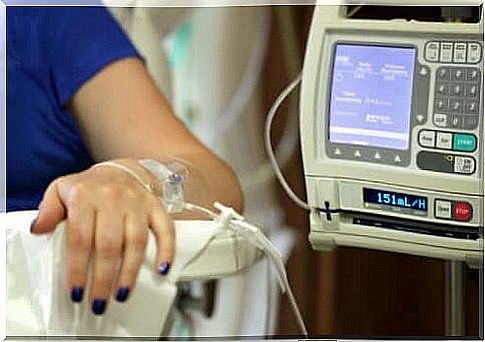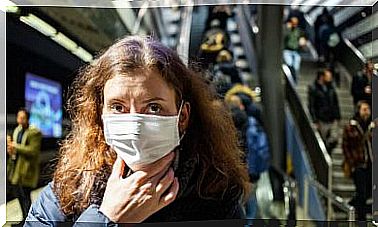How To Prevent Nausea And Vomiting Associated With Chemotherapy
The treatment of nausea and vomiting associated with chemotherapy has always been an important topic in oncolongia. Controlling these side effects is important for improving the quality of life of patients.

Nausea and vomiting associated with chemotherapy are the most common side effects of this type of treatment, and they are also the most feared by patients. Preventing nausea and vomiting associated with chemotherapy improves the quality of life of patients. This prevention also promotes better patient adherence to treatment.
Although there are many options available today to prevent nausea associated with chemotherapy, patients generally do not use it appropriately. Either because they are not used to it, or because they have used it too much.
Nausea and vomiting associated with chemotherapy depends on the patient and the treatment. These two risk factors influence the presence and intensity of these side effects.
Classification of nausea and vomiting associated with chemotherapy
We can classify chemotherapy-associated vomiting based on when the patient exhibits these symptoms:
- Acute vomiting: Acute vomiting is that which occurs within 24 hours of receiving chemotherapy
- Late vomiting: Late nausea and vomiting appear beyond 24 hours after administration of treatment and may persist for 6-7 days. Cisplatin is the most common chemotherapy drug that causes this side effect
- Anticipatory vomiting: Usually this vomiting begins within 24 hours of receiving chemotherapy. After the third or fourth cycle, it is estimated that between 20% and 40% of patients experience anticipatory vomiting

Prevention and treatment of nausea and vomiting associated with chemotherapy
Prevention and treatment measures vary depending on the type of vomiting that the chemotherapy drug causes.
Acute vomiting
For many years, the main drug agents for preventing and treating acute nausea and vomiting were dopamine antagonists, antihistamines, corticosteroids, cannabinoids, and benzodiazepines.
Although these agents offer some degree of effectiveness, they can also cause considerable side effects. Since the appearance of serotonin receptor antagonists, a new class of agents has become available which is more effective and whose side effects are less frequent and severe.
At equivalent doses, the four existing 5-HT3 antagonists (ondansetron, granisetron, dolasetron and tropisetron) are equally effective in preventing vomiting induced by moderate or strong emetogenic chemotherapy. The choice of antagonist should be based on availability, convenience, cost and side effect profile.
Late vomiting
Late vomiting is usually more difficult to treat than acute vomiting. It should be taken into account that this side effect usually appears when the patient returns home: the possibilities of control are then less. The personal and family impact are also considerable.
For these reasons, if the risk of late vomiting is present, the patient should be instructed on how to properly use antiemetic drugs. This should be done before the indication for the first cycle of chemotherapy, as adequate control of nausea and vomiting associated with chemotherapy decreases the risk of acute, late and anticipatory vomiting in subsequent cycles. This avoids unnecessary consultations and an additional dose of stress.
In late vomiting, drugs that block serotonin receptors are not very effective. Corticosteroid drugs are the most active agents for preventing late vomiting. The patient should take these drugs for 3-4 days after chemotherapy treatment.
Also, as with the prevention of acute vomiting, combining antiemetic agents appears to be more effective than using single agents. 5-HT3 antagonists would be indicated as a second-line treatment when the cited combination does not allow the side effects to be sufficiently controlled.

Anticipatory vomiting
The best way to prevent anticipatory vomiting is to control both acute and late vomiting.
If this side effect appears, behavior therapy may be effective.
In short …
The goal of all antiemetic therapy is to completely prevent the onset of nausea and vomiting associated with chemotherapy. This considerably improves the quality of life of oncology patients during their internship or once at home.
Unfortunately, despite the advances observed over the past twenty years, this goal is difficult to achieve. As previously discussed, nausea continues to be a common and worrisome side effect in patients undergoing chemotherapy.









